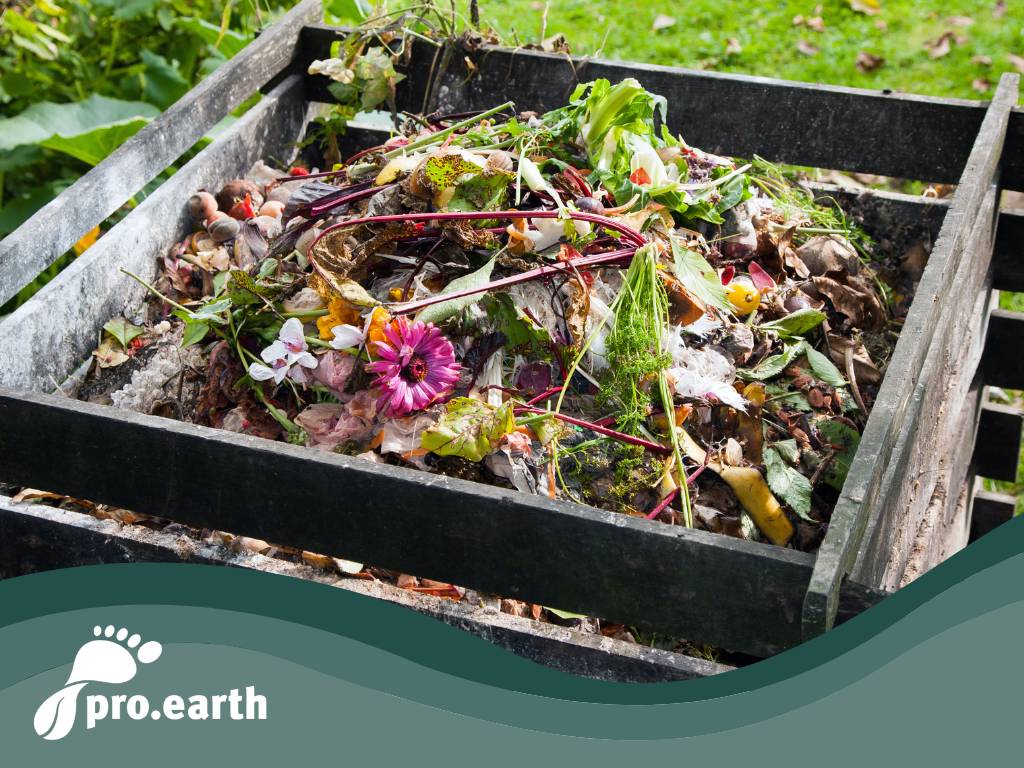Compost - the gardener's gold

At the moment, we #Beetwestern have to cut back quite a lot. Faded roses, perennials, climbing plants that want to take over the world and the like. These remnants, somewhat shredded, end up on our compost heap. And there they become wonderful soil, which in turn improves our flower beds. We can only recommend everyone to create a compost heap. If you have a patio or balcony, you can set up a worm bin instead.
Our own compost is a wonderful source of fertilizer that is available to us free of charge. But from our own experience, we #Beetschwestern know that you can make a few mistakes and end up with a smelly pile of sludge or a mountain of plant residue in your garden instead of humusy, forest-smelling soil.
So what should we look out for?
The right location
- The location for the compost heap should be semi-shady,
- with an open bottom (not sealed) so that soil life can migrate in and
- possibly fitted with rodent netting to keep out mice and the like.
- It should be placed at a certain distance from neighbors who may feel disturbed by it, although a well-ventilated compost heap does not smell unpleasant.
The right container
The compost bin should also vary depending on the size of the garden. Two or three open compost frames would be very practical for turning the compost, but there is not enough space for this everywhere. You can also use a so-called quick composter, which is very compact and space-saving.
What can go on the compost heap?
- Smaller branches - it would be best to chop them up or shred them with a lawnmower (like the British TV gardener Monty Don does)
- Leaves and shrub pruning
- Vegetable and fruit scraps
- dry grass clippings - if the grass clippings are still damp, they must be mixed with other material and spread over the pile, otherwise there is a risk that the mass will turn into a lump of sludge
- Eggshells
- old earth
T I P P: You must mix green material with brown material (branches or cardboard) in a 50:50 ratio, so that the compost can turn properly!
We picked up this tip from British cult gardener Monty Don from "Gardener's World" and it works! Since we #Beetschwestern regularly add shredded egg cartons and other cardboard waste to the compost, the pile decomposes much better - without getting soggy!
What must NOT go on the compost heap?
- Food scraps - these attract rats and mice and are not easily compostable, although some are suitable for worm bins
- Treated wood
- coated paper
- Cat litter
- Plant waste from diseased plants and those infested with pests - please dispose of these in the residual waste garbage can!
Accelerate composting
It normally takes 9-12 months for the waste to become good compost. However, this can also be accelerated. There are several products on the market for this purpose. You can also make your own compost accelerator, for example with a comfrey or nettle slurry, which you then spread on the compost. However, the fermentation of this liquid manure is very odorous, as we have already experienced ourselves - so it's not for the faint-hearted and/or neighbors!
The second method is to dissolve 500 grams of sugar with a yeast cube in lukewarm water and then spread it over the komost mixed with a full can of semolina. This stimulates the crushing by microorganisms.
The heat generated in the compost heap indicates whether decomposition is working well. This phase is called hot rotting. The temperatures in the heap rise to up to 70 degrees! After this phase, the system cools down again and the cold rotting phase begins, in which microorganisms colonize the heap and decompose it further.






